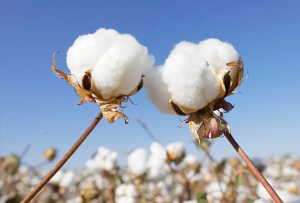Nonwoven fabrics are an essential part of modern cotton products, offering versatility, softness, and durability. At Winner Nonwovens, we specialize in producing cotton-based nonwoven fabrics for a wide range of applications, including medical, personal care, cosmetic, and household products. Many people are curious about how nonwoven fabric is made and why it is so widely used in cotton products.
Understanding Nonwoven Fabric
Nonwoven fabric is created by bonding fibers together without weaving or knitting. This process differs from traditional textiles, where threads are interlaced to form fabric. Nonwoven cotton fabrics combine the natural softness and absorbency of cotton with a structure that is strong, flexible, and lightweight. At Winner Nonwovens, we focus on producing high-quality nonwoven fabrics that maintain the natural benefits of cotton while providing superior performance for various applications.
The Production Process of Nonwoven Fabric
Nonwoven fabrics can be produced using several methods, including mechanical, chemical, and thermal bonding. One of the most common methods in cotton products is hydroentanglement, also known as spunlace. In this process, high-pressure water jets entangle cotton fibers to form a uniform, strong fabric. The water pressure creates a durable sheet while maintaining the softness and absorbency of cotton.
Other methods include needle punching, where fibers are mechanically interlocked using barbed needles, and thermal bonding, where heat is used to fuse fibers together. Each method produces fabric with unique properties, but for cotton products, hydroentanglement is preferred because it preserves the natural feel and safety of cotton while producing a soft and reliable material.
Applications in Cotton Products
Nonwoven fabrics produced by Winner Nonwovens are used in a variety of cotton products. In the medical field, they are used for surgical pads, dressing materials, protective covers, and wipes. Their softness and strength make them suitable for sensitive applications while maintaining hygiene standards.
In personal care, cotton-based nonwoven fabrics are used in baby wipes, facial tissues, cosmetic pads, and cleansing cloths. These products benefit from the absorbency, softness, and strength of nonwoven cotton fabrics, providing gentle and effective care. Household cleaning wipes and industrial absorbent pads also utilize nonwoven fabrics for their reliability and durability.
Why Nonwoven Fabric Matters
Nonwoven fabrics stand out because they combine the natural qualities of cotton with modern production techniques. They are gentle on the skin, absorbent, strong, and suitable for disposable or single-use products. As a trusted nonwoven fabric supplier, Winner Nonwovens ensures that every batch meets strict quality standards, providing consistent performance for both personal care and professional applications.
Conclusion
Understanding how nonwoven fabric is made highlights its advantages in cotton products. At Winner Nonwovens, we use advanced techniques such as hydroentanglement to produce soft, absorbent, and durable fabrics for medical, personal care, cosmetic, and household applications. By focusing on high-quality cotton-based nonwoven fabrics, Winner Nonwovens provides materials that are safe, reliable, and versatile, meeting the diverse needs of modern cotton products.











